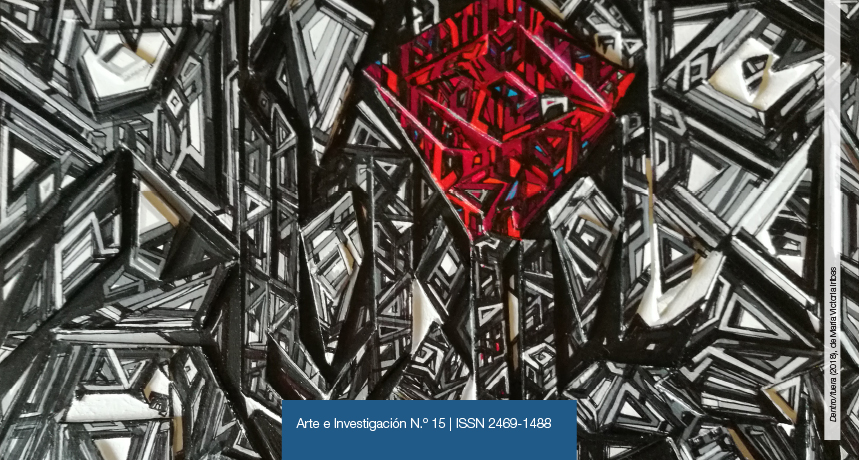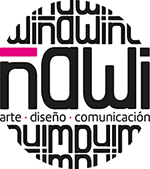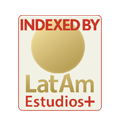One We All Know. Sound Images in La asombrosa excursión de Zamba
DOI:
https://doi.org/10.24215/24691488e025Keywords:
Image, music, audiovisual, education, ZambaAbstract
In this paper we propose some reflections on the concept of sound image and its links with other metaphorical forms. We analyse an audiovisual pedagogical material that produces historical, sociological and educational contents in fictional narrative contours designed for television: the program La asombrosa excursión de Zamba made by the producer El perro en la luna, at the request of the Ministry of Education of the Argentine Nation and issued by the children’s channel PakaPaka.Downloads
References
Aliverti, E. (5 de octubre de 2014). Entrevista a Sebastián Mignona. En Decime quién sos vos [Programa radial]. Recuperado de http://www.decimequiensosvos.com.ar/
Belinche, D. (2010). Tiempo. Sobre el pasado y el presente del arte. Revista Iberoamericana de Educación, 52(4), 1-13. Recuperado de https://rieoei.org/RIE/article/view/1787
Castro, M. J. y Pardo, M. V. (2015). ¿Por qué, cuándo y para qué? Nuevos paradigmas en televisión educativa: La asombrosa excursión de Zamba (Televisión Pública). Ponencia presentada en las 5.˚ Jornadas de Becarios y Tesistas. Departamento de Ciencias Sociales de la Universidad Nacional de Quilmes, Buenos Aires, Argentina. Recuperado de http://sociales.unq.edu.ar/wpcontent/uploads/byt2015/ponencias/eje08/CASTRO_Maria_JoseyPARDO_MariaDeLaVictoria_PONENCIA.pdf
Crivelli, S. (2015). Las aventuras de Zamba. Apuntes sobre la comunicación audiovisual en un canal infantil del Ministerio de Educación argentino. Actas de Periodismo y Comunicación, 1(1). Recuperado de https://perio.unlp.edu.ar/ojs/index.php/actas/article/view/2872
Chateau, J. (1976). Las fuentes de lo imaginario. Ciudad de México, México: Fondo de la cultura económica.
Didi-Huberman, G. (2006). Ante el tiempo. Historia del arte y anacronismo de las imágenes. Buenos Aires, Argentina: Adriana Hidalgo Editora.
Larregle, E. (2012). Bajan las luces, empieza la música. Arkadin, 6(4), 66-72. Recuperado de http://papelcosido.fba.unlp.edu.ar/pdf/revistas/arkadin/Arkadin-4.pdf
Lauría, E. (Productor) y Mignogna, S. (Director). (2012a). La asombrosa excursión de Zamba en las Islas Malvinas [Serie televisiva]. Recuperado de http://www.pakapaka.gob.ar/videos/104629
Lauría, E. (Productor) y Mignogna, S. (Director). (2012b). La asombrosa excursión de Zamba en Yapeyú (primera parte) [Serie televisiva]. Recuperado de http://www.pakapaka.gob.ar/videos/100195
Sartre, J. P. [1940] (1976). Lo imaginario. Psicología Fenomenológica De La Imaginación. Recuperado de http://200.95.144.138.static.cableonline.com.mx/famtz/smr/index_archivos/cursos/lo_imaginario_lectura.pdf
TV Pública Argentina. (16 de septiembre de 2012). Escenas de la novela argentina – 15-09-12 (1 de 3) [Programa televisivo]. Recuperado de https://www.youtube.com/watch?v=fpTjlSG4Pso&list=PLTtUBvUqdeJTRiNF5Olv4N14SlwJULA0Z&index=7
Wikipedia. (2018). Imagen [Entrada de página]. Recuperado de https://es.wikipedia.org/wiki/Imagen
Downloads
Published
How to Cite
Issue
Section
License
The acceptance of the manuscript by the magazine means the non-exclusive cession of the property rights of the authors in favour of the editor, who allows the reuse, after publication (post print), under a license Attribution-NonCommercial-NoDerivatives 4.0 International. According to these terms, the material can be copied and redistributed by any means or in any format as long as a) the author and original source of the publication are quoted (magazine and URL of the work), access to the license is provided and whether changes have been made is mentioned; and b) the material is not used for commercial purposes.
The cession of non-exclusive rights means that after the publication (post print) in Arte e Investigación the authors can publish their work in any language, means and format; in such cases it must be mentioned that the material was originally published in this magazine. Such cession also means the authorization of the authors for the work to be collected by SEDICI, the institutional archive of the National University of La Plata, and to be spread in the databases that the editorial team considers appropriate to increase the visibility of the publication and its authors.
Moreover, the magazine encourages the authors to deposit their productions in other institutional and thematic archives under the principle that offering the society the scientific and academic production without any restrictions contributes to a greater exchange of the global knowledge.


































